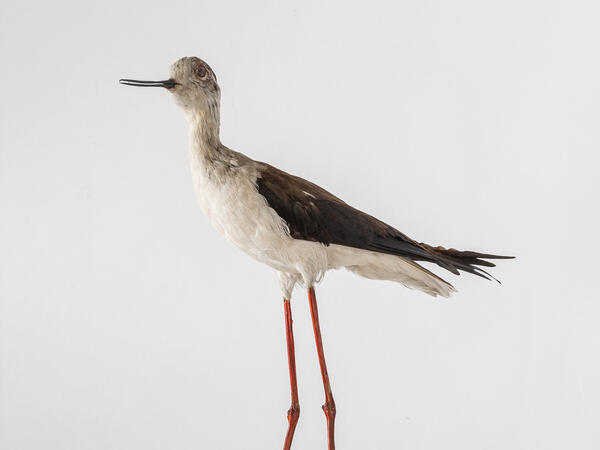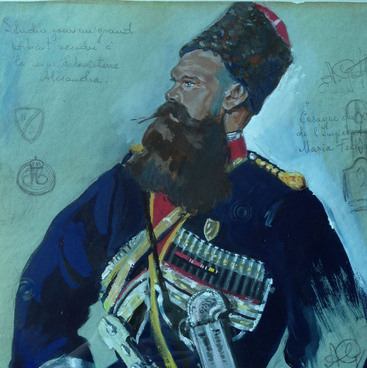The black-winged stilt is an aquatic bird in the avocet family, a little smaller than a pigeon. It lives mainly on or around freshwater and saltwater ecosystems; it is found on the Black Sea and the Caspian Sea coasts, in the Pre-Caucasus, in Saratov and Orenburg Regions. They spend the winter in Africa, near the Caspian Sea, and in India, and usually return to the north in mid-spring.
The plumage of these birds is black and white. Males have a black upper part of the head, back, and the wings are bluish-green. Females' backs have a brown hue. A characteristic feature of black-winged stilts is their long thin red three-toed legs, which enable them to go into the water far from the shore in search of food. The birds are omnivores: they eat plants, tadpoles, water beetles, and their larvae, which they catch with their long thin beaks. Between the middle and outer toes, black-winged stilts have a small membrane, which helps them to swim.
These birds are usually peaceful and quiet, but during the nesting season, from about mid-May to mid-June, there are noisy territorial contests. The nests consist of twigs and grass and look like a bowl about six centimeters high. Inside, the birds cover their nests with soft grass and fluff.
Female stilts usually lay four eggs, which vary in color from olive green to ash gray. The shell is covered with small dark red specks. Black-winged stilts hatch eggs for about 25 days. Near the nest, they behave restlessly: they shriek, fuss, and pretend to be sick or wounded when strangers appear — the easy prey can lead the enemy away.
In a month, the chicks are already independent. They differ from adults in the color of their legs, which are not bright red, but pinkish gray. The birds begin to breed at the age of two years.
Black-winged stilts are rare birds: they are included in the Red Book of Russia and Krasnodar Krai.
The plumage of these birds is black and white. Males have a black upper part of the head, back, and the wings are bluish-green. Females' backs have a brown hue. A characteristic feature of black-winged stilts is their long thin red three-toed legs, which enable them to go into the water far from the shore in search of food. The birds are omnivores: they eat plants, tadpoles, water beetles, and their larvae, which they catch with their long thin beaks. Between the middle and outer toes, black-winged stilts have a small membrane, which helps them to swim.
Sometimes the birds dive so deeply into the water that only their tail remains visible on the surface. They rarely eat on land, since it would require bending the knees — a problem for a species with long legs.
These birds are usually peaceful and quiet, but during the nesting season, from about mid-May to mid-June, there are noisy territorial contests. The nests consist of twigs and grass and look like a bowl about six centimeters high. Inside, the birds cover their nests with soft grass and fluff.
Female stilts usually lay four eggs, which vary in color from olive green to ash gray. The shell is covered with small dark red specks. Black-winged stilts hatch eggs for about 25 days. Near the nest, they behave restlessly: they shriek, fuss, and pretend to be sick or wounded when strangers appear — the easy prey can lead the enemy away.
In a month, the chicks are already independent. They differ from adults in the color of their legs, which are not bright red, but pinkish gray. The birds begin to breed at the age of two years.
Black-winged stilts are rare birds: they are included in the Red Book of Russia and Krasnodar Krai.



